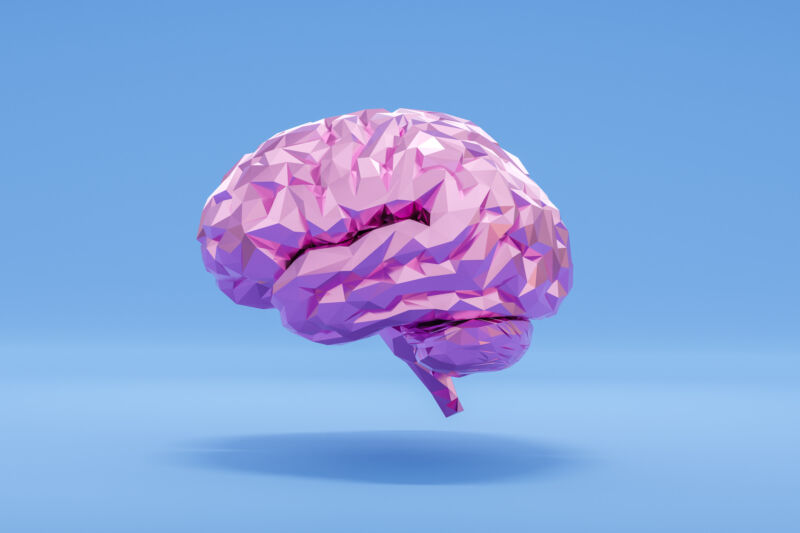Rhythmic activity during sleep may get fluids in the brain moving.
As if we didn’t have enough reasons to get at least eight hours of sleep, there is now one more. Neurons are still active during sleep. We may not realize it, but the brain takes advantage of this recharging period to get rid of junk that was accumulating during waking hours.
Sleep is something like a soft reboot. We knew that slow brainwaves had something to do with restful sleep; researchers at the Washington University School of Medicine in St. Louis have now found out why. When we are awake, our neurons require energy to fuel complex tasks such as problem-solving and committing things to memory. The problem is that debris gets left behind after they consume these nutrients. As we sleep, neurons use these rhythmic waves to help move cerebrospinal fluid through brain tissue, carrying out metabolic waste in the process.
In other words, neurons need to take out the trash so it doesn’t accumulate and potentially contribute to neurodegenerative diseases. “Neurons serve as master organizers for brain clearance,” the WUSTL research team said in a study recently published in Nature.
Built-in garbage disposal
Human brains (and those of other higher organisms) evolved to have billions of neurons in the functional tissue, or parenchyma, of the brain, which is protected by the blood-brain barrier.
Everything these neurons do creates metabolic waste, often in the form of protein fragments. Other studies have found that these fragments may contribute to neurodegenerative diseases such as Alzheimer’s.
The brain has to dispose of its garbage somehow, and it does this through what’s called the glymphatic system (no, that’s not a typo), which carries cerebrospinal fluid that moves debris out of the parenchyma through channels located near blood vessels. However, that still left the questions: What actually powers the glymphatic system to do this—and how? The WUSTL team wanted to find out.
To see what told the glymphatic system to dump the trash, scientists performed experiments on mice, inserting probes into their brains and planting electrodes in the spaces between neurons. They then anesthetized the mice with ketamine to induce sleep.
Neurons fired strong, charged currents after the animals fell asleep. While brain waves under anesthesia were mostly long and slow, they induced corresponding waves of current in the cerebrospinal fluid. The fluid would then flow through the dura mater, the outer layer of tissue between the brain and the skull, taking the junk with it.
Just flush it
The scientists wanted to be sure that neurons really were the force that pushed the glymphatic system into action. To do that, they needed to genetically engineer the brains of some mice to nearly eliminate neuronal activity while they were asleep (though not to the point of brain death) while leaving the rest of the mice untouched for comparison.
In these engineered mice, the long, slow brain waves seen before were undetectable. As a result, the fluid was no longer pushed to carry metabolic waste out of the brain. This could only mean that neurons had to be active in order for the brain’s self-cleaning cycle to work.
Furthermore, the research team found that there were fluctuations in the brain waves of the un-engineered mice, with slightly faster waves thought to be targeted at the debris that was harder to remove (at least, this is what the researchers hypothesized). It is not unlike washing a plate and then needing to scrub slightly harder in places where there is especially stubborn residue.
The researchers also found out why previous experiments produced different results. Because the flushing out of cerebrospinal fluid that carries waste relies so heavily on neural activity, the type of anesthetic used mattered—anesthetics that inhibit neural activity can interfere with the results.
Other earlier experiments worked poorly because of injuries caused by older and more invasive methods of implanting the monitoring hardware into brain tissues. This also disrupted neurons.
“The experimental methodologies we used here largely avoid acute damage to the brain parenchyma, thereby providing valuable strategies for further investigations into neural dynamics and brain clearance,” the team said in the same study.
Now that neurons are known to set the lymphatic system into motion, more attention can be directed towards the intricacies of that process. Finding out more about the buildup and cleaning of metabolic waste may contribute to our understanding of neurodegenerative diseases. It’s definitely something to think about before falling asleep.
Nature, 2024. DOI: 10.1038/s41586-024-07108-6
- Mutton and Adenman
-

 2
2



Recommended Comments
There are no comments to display.
Join the conversation
You can post now and register later. If you have an account, sign in now to post with your account.
Note: Your post will require moderator approval before it will be visible.